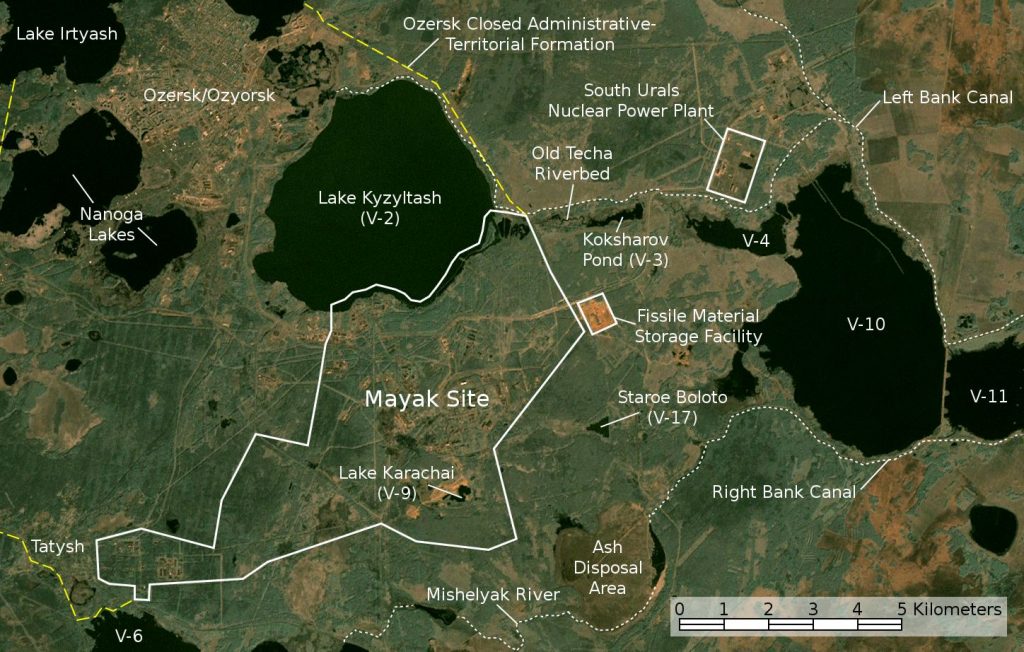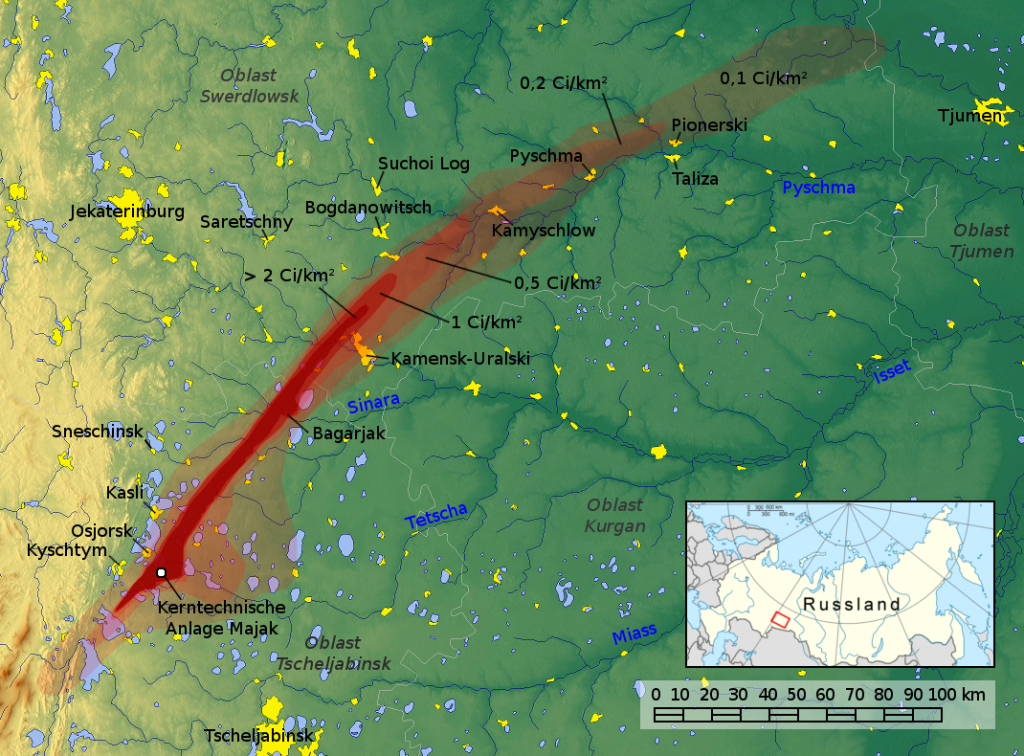Kyshtym Disaster
Introduction
The Kyshtym disaster was a level 6 “serious accident” (on the international nuclear events scale) that occurred on 1957 in Russia (then Russian Soviet Federative Socialist Republic). It was an incident that occurred when nuclear waste stored underground was not adequately maintained which lead to the explosion and release of up to 80 tons of nuclear waste into the surrounding area causing radiation poising to unknowing villagers and wildlife.
What Happened?
This started in 1945, only a few days after the nuclear bombings of Hiroshima and Nagasaki by North America. Joseph Stalin saw the effects nuclear weapons had and the threat they caused to Russia. Because of this Joseph Stalin decided it was of great importance to focus more effort towards a greater nuclear program.
Creation of the Nuclear Reactors:
The industrial complex (used for nuclear reactions) named Mayak was constructed east of the Ural Mountains 1800km east of Moscow. This construction was carried out during the height of cold war tensions so this operation was done in total secrecy. To keep the operation a secret, the construction was carried out in 1945 by around 70,000 inmates from 12 labour camps and finished in 1948. (Cochran 1993) 6 more reactors were eventually built which spanned across the southern shore of Kyzyltash. These plants were constructed to weaponize plutonium used in the manufacture of nuclear missiles. Burmistrov (2000)

The knowledge and information gained about the weaponization of plutonium and the construction of nuclear missiles was gathered by Russian spy rings that operated inside of the Manhattan Project which developed nuclear weapons such as the “Fat Man” and “Little Boy” which were used on Nagasaki and Hiroshima respectively. This meant that they had knowledge on nuclear physics and the manufacture of these weapons however there were large gaps in knowledge that would eventually lead to detrimental effects on the surrounding population.
Lack of Knowledge:
In the 1950’s the knowledge of the effects of nuclear waste on ecosystems was not high. This lack of knowledge meant that mistakes were being made such as poor design of the cooling system for cooling the reactors. The cooling system used water from the Techa River and the lake Kyzyltash to cool the reactors. This water would become irradiated from the nuclear materials and be released back into the river and lake. (Burmistrov 2000) The river became highly irradiated (due to radiation from the cooling system and the regular dumping of nuclear waste) which caused serious illness for people living in the local villages as they relied on the river as a source of water for drinking and cleaning. Between the years of 1949 to 1956, 3 million Ci of radiation was released into the Techa River. (Collins 1991)
Highly radioactive waste created by the reactors was stored underground (8.2m) in rectangular containers made from stainless steel. These containers were kept cool using an external cooling system and monitored using sensors inside of the storage facility. There were many issues involved with this storage system. Firstly some of the sensors used to monitor the temperature inside of the storage system failed. Due to “insufficient production capacity” (Cochran 1993) the tanks were switched to being cooled periodically. This combined with the failed monitors allowed one of the containers to be heated up to 350 Degrees Celsius and on 29th September 1957, the tank exploded with a force close to 70 – 100 tons of TNT (Cochran 1993). This explosion and release of waste into the local area and atmosphere was later called the Kyshtym Disaster.
Effects
70 – 80 tons of waste was released into the local area. 10% of this created a 1km high radioactive gas cloud which affected 217 towns with a total population of 270,000. The three most contaminated villages in the nearby area had a combined radiation dose of around 150 – 300 rads. These villages which had around 1054 – 1908 weren’t even evacuated until 7 – 10 days after the incident occurred. This caused many locals to become ill as they were not told about the incident. (Cochran 1993) After the evacuation, homes were destroyed, cattle killed and crops were buried in an attempt to prevent further contamination. The people in these villages relied on these crops and animals to provide a living.
Much of the local wildlife was also affected and even died as a result and by 1959 all of the pine trees in the surrounding area died which heavily effected the local ecosystem. (Cochran 1993)

How it could have been resolved
The first way this could have been resolved is by properly maintaining the storage system. If the monitors for the temperature were fixed rather than being left then it would have been apparent that there was an issue as there would be a visible rise in temperature. Knowing this would mean that the incident could have been stopped before it irrupted.
Radioactive waste should have been disposed of away from living activity. By dumping the waste into various water sources, it managed to get into the nearby villages drinking water. This was one of the largest factors to causing radiation poising in the area.
After the explosion, the villages should have been evacuated immediately. This would have prevented major radiation poisoning in thousands of people as they would not have had gained as much radiation from the atmosphere.
